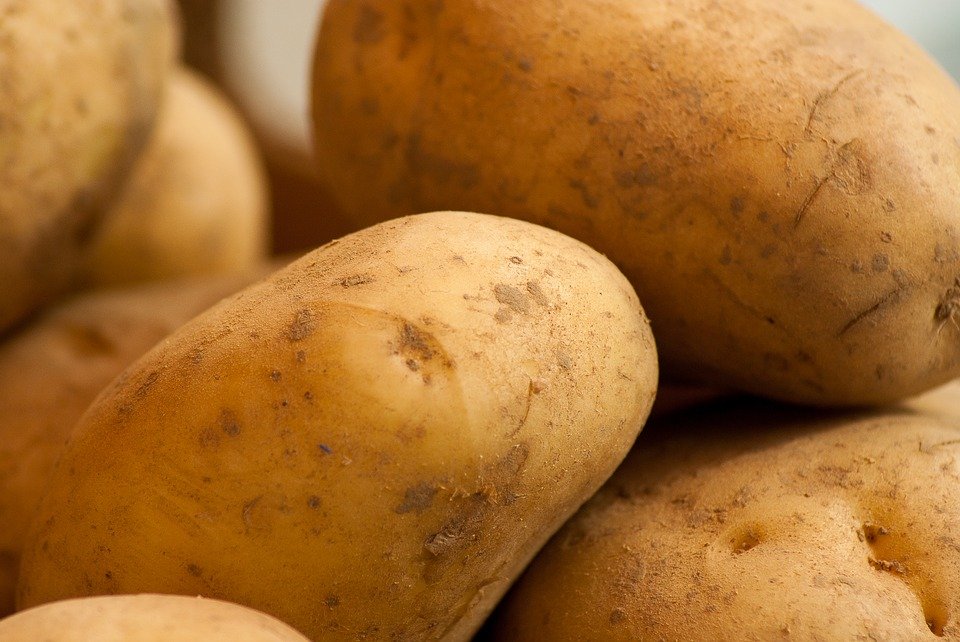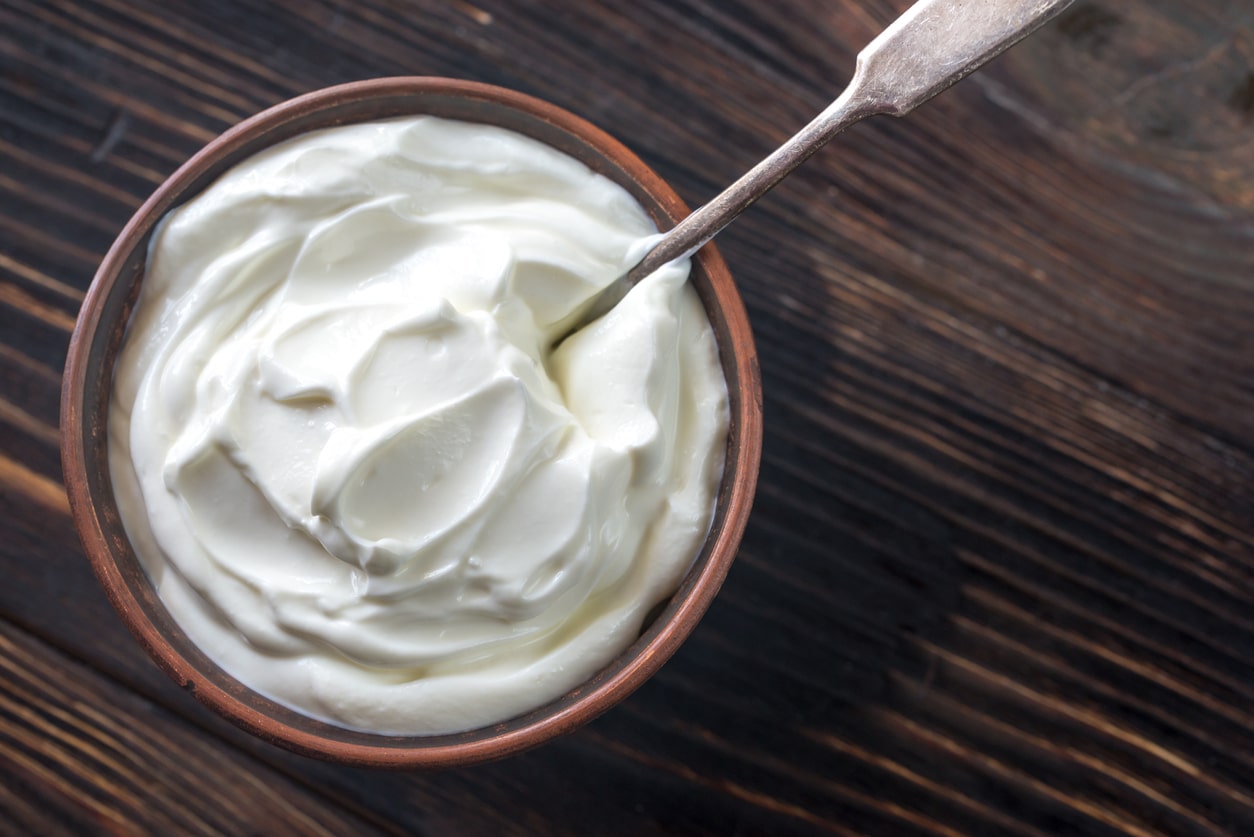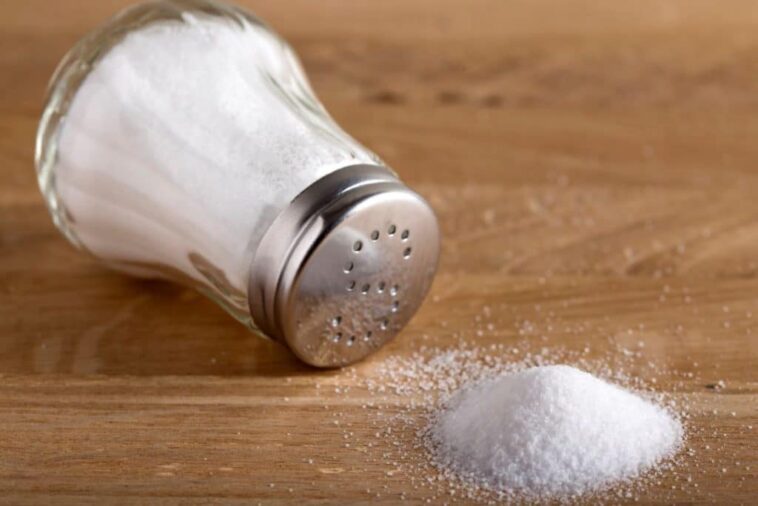Ouch! Have you had a heavy hand and your dish is now too salty? So you wonder if it is possible to save your dish or if you will have to start all over again from the beginning. In addition, we know: sodium consumed in excess is not good for our health and exposes us to cardiovascular diseases. Beyond the 5 g per day recommended by the WHO, we become more at risk of having a myocardial infarction or a stroke, favored by excessively high blood pressure. For your health and your taste buds, don’t panic! You will discover some grandmother’s tips that will allow you to quickly soften your delicious preparation when you have added too much salt. The seasoning of your small dishes will be saved just like your recipe!
And next time, be careful not to over-salt your preparations.
The potato to save a dish that is too salty

1. Peel a potato (or several potatoes for a large dish).
2. Cut it in half or into slices approximately 5 mm thick and add the pieces to your simmering saucepan over medium heat or boiling. Cook slowly, stirring occasionally.
3. As it cooks, the potato will absorb the salt. Once cooking is complete, you will only have to remove the pieces once your dish is ready, because this starchy food will not be edible.
This tip is ideal for simmered dishes and very appreciated for meat dishes in sauce or a stew. If you don’t have potatoes, you can also use stale bread to cook your preparations.
The sugar cube technique to save your recipe

1. Place a cube of sugar in a spoon.
2. Immerse the spoon in your preparation (if it is liquid) for a few moments making sure the sugar does not melt.
3. Remove the sugar cube. Your dish will be a treat!
Fruit or crème fraîche to make up for a dish that is too salty

If your dish allows it, add a few pieces of fruitespecially apples. Otherwise, use ricotta or crème fraîche at the end of cooking. It’s ideal in a gratin, a risotto, pasta or if you don’t like sweet and sour. All you have to do is let it simmer: the taste should be softened. Coconut milk will also be ideal depending on the recipes you make (curried rice, zucchini, chicken or turkey, lentil puree, pumpkin soup, vegetable soup, etc.). Your taste buds will dictate the right choice for a delicious recipe! In any case, coconut milk and crème fraîche are the solutions of choice to save an overly salty sauce or velouté.
Acidity to counterbalance excess salt

To counterbalance the excess salt, you can also add acidity to the dish if the recipe lends itself to it. This can be cider vinegar or white vinegar, but also lemon juice which will less alter the taste of your dish.
How to save a dish that is too salty (depending on the recipe or type of preparation)?

Sometimes, the solution when you add too much salt when seasoning will depend on the type of dish or recipe.
How to recover overly salty pasta or rice?
Here, the simplest thing will be to change your cooking water. To do this, drain your pasta, rice or starchy foods. Then fill the pan again, this time with unsalted water, and cook them again for the necessary time. This should be enough to remove the excess salt.
How do I make up for soups or sauces?
Whether you are preparing a velouté for fall-winter or a sauce to accompany a dish, bring a piece of old bread. Leave it in the water for several minutes before mixing, time for the crumb to absorb excess salt. Then remember to take out your bread before it disintegrates under the effect of the heat. Otherwise, it is also possible to use the potato trick explained earlier to save your preparation or by adding an unsalted liquid (milk, cream, etc.).
It is also possible to rebalance the flavors of a wine sauce with poor seasoning. by adding a square of chocolate. In addition to counteracting the excess salt, this will help bind the sauce and make it smoother. Finally, to correct the excess salt in a tomato sauce, adding sugar can be very effective.
How to make up for a mash that is too salty?
As with the soup, here you can add milk or unsalted crème fraîche, but also unsalted butter. Otherwise, it is possible to make the puree without salt and mix the two preparations for a more balanced result.
What to do if meat, fish or steamed vegetables are too salty?
In both cases, we can rinse the piece of steak or fish fillet under a stream of tap water. (And don’t forget to rinse the pan too!) This will remove excess salt and allow you to adjust the seasoning to your liking. It is also possible to desalinate steamed meat or vegetables by letting them disgorge in a pan with a little water. As it cooks, get rid of the resulting juice until the excess salt disappears. Be careful, this last method makes the vegetables lose all their crunch and the meats risk becoming less soft. However, this will have the merit of saving your meal.
Dealing with an overly salty dish can seem daunting, but with the right tips, it’s entirely possible to rectify the situation without starting from scratch. Grandma’s techniques such as using potatoes, sugar cubes, or fruit and crème fraîche offer practical and effective solutions to soften excess salt. Additionally, adding acidity or changing the cooking water for pasta or rice are other clever methods to save your preparations.
The importance of controlling the amount of salt is not only limited to the flavor of your dishes, but also to the preservation of your health. Excessive sodium consumption can increase the risk of cardiovascular disease. So, to avoid these inconveniences, it is always preferable to lightly salt at the beginning and correct the seasoning at the end of cooking.
By applying these tips, you will not only be able to make up for an overly salty dish but also improve your cooking skills for tastier and healthier meals. So next time, keep a light hand on the salt and savor every bite with the peace of mind of knowing you can always adjust your recipe. Enjoy your food !


